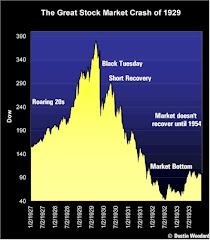Chart from Statscan 2007 Note: RRSP assets in Canada total about $700 Billion
I received an excellent analysis and comparison of pensions in Canada and the UK.
Bob Parsons had written to me in response to the blog I wrote about the Hutton pensions report that was released in the UK. There are big difference between the public sector plans in Canada and those in the UK.
The UK pensions are not pre-funded and are paid on a pay as you go basis. This has created huge problems for the UK as the economy has slowed down and there has been a choice to be made for politicians between services and the compensation packages of the public sector.
It feels like the taxpayers is losing as the public sector and politicians dictate where our tax dollars go. Most taxpayers feel it is going directly into the pockets of the elected officials and the civil service.
As I am doing some research for my book I ran across a report from the BNAC back in 2009 that provided a good comparison between the UK, USA and Canada. Basically all systems are in trouble and the UK is the worst off of all. British-North American Committee (BNAC) report
One of the reasons that the systems has gotten out of balance was described in this short editorial letter Market Balance Needed
On to Bob's letter. Thanks for sending this excellent letter Bob
After seeing the post you made on Lord Hutton’s pension report I became curious to find out what type of pension plan public servants in the UK have compared to our federal government pension plan.
I printed off the nuvos pension scheme guide pamphlet. Here are some of the things I discovered.
1. In the UK employees can opt out of their pension plan. We can not do this in Canada. (Section 5 Do I have to join nuvos?)
2. They only pay 3.5% we pay over 7% for superannuation and CPP which in my case last year was resulted in me paying 9.25%. (Section 9 How much do I pay?)
3. They build up pension value at 2.3% a year compared to our 2% for the Canadian Federal Government public employee pension plan. (Section 17. How do you work out my pension?)
4. They use the Retail Price Index which provides a much higher rate of increase than the Consumer Price index we use. (Section 18. Will the pension I have build up in value?)
5. They can earn a pension up to 75% of base salary while we can only earn up to 70%. (Section 21 Is there any limit to the size of my pension?)
6. They base their pension the highest of
a) Your pensionable earnings in your final year, or
b) your highest pensionable earnings in any of the last 10 scheme years: or
c) your highest average of three consecutive years’ pensionable earnings.
Ours is based on the best 5 years. (Section 21 Is there any limit tp the size of my pension?)
7. They allow you to take part of your pension as a tax free lump sum. We can not do this (Section 22 Can I take a tax-free lump sum?)
8. They are allow to collect their pension while continuing to work, although you have to 75 to do this. We can not do this. (Section 29 What if I want to work beyond my pension age?)
Even with Lord Huttons recommended increase in contributions for employees they will be paying far less than we are here in Canada.
Some other factors you have to take into account is that we have started to fund our pension plan since 2000. We have build up net assets of over $50 billion. The fund has being growing at a rate almost twice as much as the federal government is paying for public service pensions on an annual basis. I believe the UK is still a pay as you go scheme. So we are in much better shape.
In 2009 federal government paid 1.01% of total government expenditures on public sector pensions. (Public Accounts 2009, Public Service Pension Plan Report 2009). In terms of GDP it is below .2% of GDP. Your colleague Leo over at Pension Pulse ran an interesting article on the UK public servant pension plan. He showed a graph that showed that their public sector pensions were more than 1.6% of their GDP which is more than 8 times ours.
I had a quick look at several US state public servant pension plans. They have costs between 3 to over 6% of total expenses. In many states employees do not pay anything toward their pension costs and in the ones that do I could not find any that contribute anywhere near as much as we do. Even Scott Walker is not asking his employees to contribute anywhere as much as federal employees in Canada have to pay. In every state I looked at they do not collect full income taxes on pensions, must do not collect any.
I read your proposed solution, which is to copy the US federal employee pension plan, which is based on three elements. The first is an indexed defined benefit pension plan which is I think based on 1.1% of earned income each year. The second element is Social Security which is also an indexed defined benefit plan. The third element is a defined contribution plan in which the US government matches employee contributions up to a certain level. To be fair to public servants in Canada you need to increase the first element to make up for the fact that Social Security pays far more than CPP if you want to have equivalent pension plans in both countries.
The bottom line is that public employees in the UK currently get one hell of a better pension for 3.5% of their pay than we do here in Canada. Our pensions also pale in comparison to those at the state and federal level in the US. We pay a lot more for less pension benefits.
Bill Tufts
Fair Pensions For All




No comments:
Post a Comment